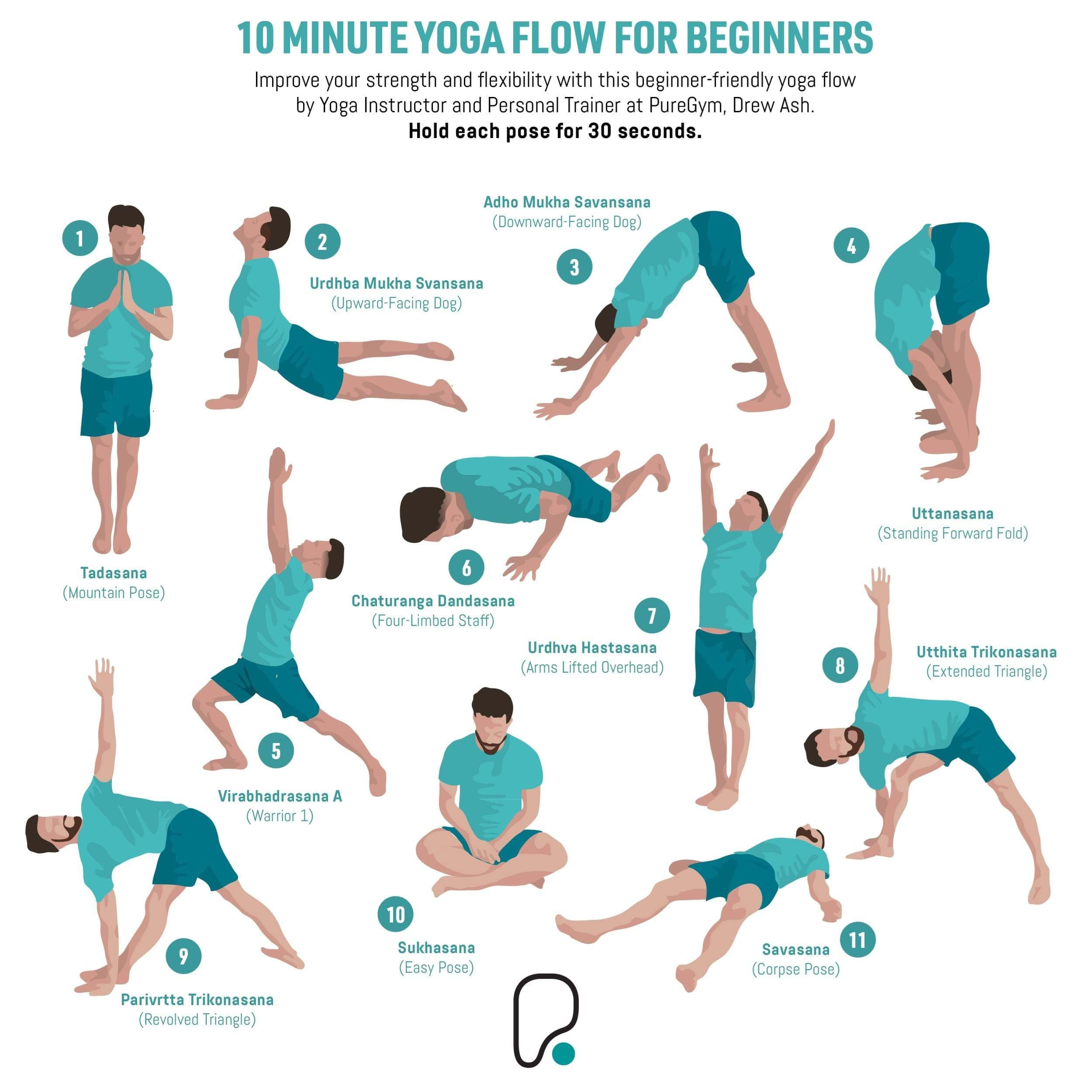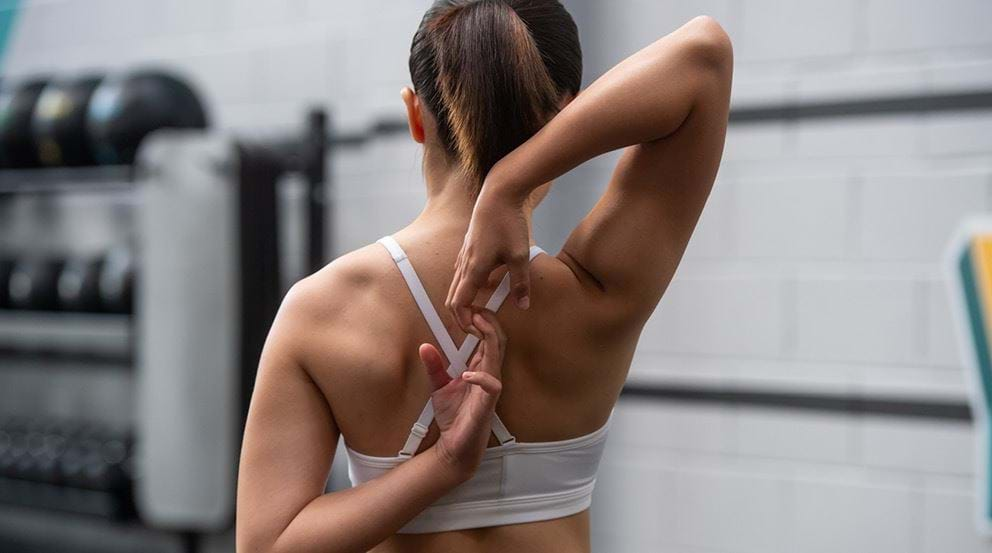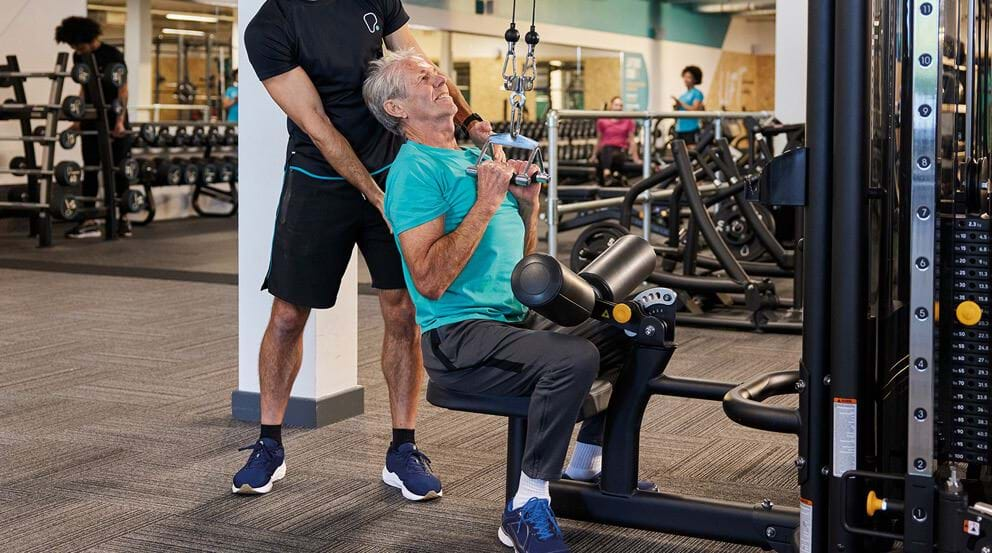The Best Yoga Poses For Beginners

Yoga is a practice which incorporates the body, spirit, and mind. There are several types of yoga, and each can be challenging in their own way.
For anyone who has never done yoga before, it can be difficult to know where to start, or what type of yoga to try. Some yoga poses look incredibly complex and rely on a great deal of strength and mobility, and even the terminology used can appear daunting to those who are new to yoga.
There are huge mental and physical benefits to practicing yoga, so it is well worth starting even if you are nervous! Even practicing just 10 minutes of yoga a day will help you see a difference, including:
Better posture
Increased full body strength
Improved mental health
Reduced stress
Learn more about the benefits of yoga here, as well as five great poses to help with lower back pain here. We've also answered some yoga FAQs here.
In this blog PureGym Personal Trainer and Yoga Teacher, Drew Ash, shares some of the best yoga poses for beginners looking to get into yoga and develop their strength and mobility.
All you need to get started is some space, a yoga mat or soft floor, and the willingness to try. If that sounds like you, welcome to the world of yoga.
“Yoga is for everyone who is willing to show up.”
Yoga moves for beginners
There are hundreds of asanas (yoga poses) out there, and plenty of these can be suitable for beginners. Below are 11 asanas that are great for developing a solid foundation in the physical practice of asana (hatha yoga). These can be combined to make a great beginner yoga routine that can help you to build strength, mobility, and stability, as well as start to explore the practice of looking inward. Try spending 30 seconds in each pose, and 15-30 seconds transitioning between poses.
Some of these yoga for beginners poses may feel challenging, but they will provide you the tapas (stimulus to illicit change) needed to improve your physical and mental state.

Tadasana (Mountain Pose)
Although it might not look like it does much, the Mountain Pose actively engages your whole body. It helps to improve your body awareness and alignment, gain composure, and develop strength and stability through the central axis, which can improve posture.
- Stand with your feet together, or hip width apart if you struggle with balance, with your arms held down by your sides.
- Roll your hips so they are stacked in line with your ankles and pull your shoulders back and down.
When doing Tadasana, pay attention to the position of your body. Your spine should be neutral, knees soft, and chest open.
Urdvba Mukha Svansana (Upward-Facing Dog)
Upward-facing dog is a yoga pose you might be familiar with, as it is often used by non-yogis as an upper body stretch. This back bending pose opens the chest, engages the core, strengthens the back muscles, and lengthens the spine.
- Start by lying prone (on your stomach) on your mat, with the soles of your feet facing the ceiling.
- Bring your hands to your lower ribs, palms flat on the floor.
- Push through your hands to lift the chest off the ground and slide your weight forward.
- As you push up, focus on lengthening your body from the soles of your feet, through the spine, to your shoulders.
Adho Mukha Savansana (Downward-Facing Dog)
Downward-facing dog is another famous yoga pose, and one which has many benefits! This asana stretches and lengthens the posterior chain (it's particularly great for stretching out tight hamstrings), strengthens the shoulders, and improves posture. This is an inversion pose, which means your head is lower than your heart, which can help to increase blood circulation.
- Place your hands flat on the floor, shoulder-width apart, with your feet hip-width apart.
- Extend your legs up to shift your hips towards the ceiling while bringing your head in between your arms. As you shift your upper body down, broaden the shoulders.
- Keeping a soft bend in your knee, lengthen your heels towards the ground as far as you can -- they don't need to touch the ground.
The downward dog often comes straight after upward dog. Once you are happy doing both poses, try transitioning seamlessly between the two.
Uttanasana (Standing Forward Fold)
Standing forward fold, or standing forward bend, is another inversion pose which stretches and lengthens the posterior chain, improves blood flow and digestion, and stimulates the abdominal organs.
- Stand with your feet together, then lean forward at the hips and place your hands on the ground, bending your knees if needed.
- Rest your neck and head and gaze out between your legs.
Depending on your mobility, you may find you have to bend your knees and only place your fingertips on the floor. As you continue to practice yoga, this should improve.
Virabhadrasana A (Warrior 1)
Warrior 1 is one of the images most associated with yoga asana, and for me it's the first image that always comes to mind. This pose can be changed up and progressed in multiple ways, so it's perfect for beginners and seasoned practitioners alike. It helps to build strength in the quads, and lengthens the back, hip flexors, and spine.
In vinyasa, it's common to enter Warrior 1 from Adho Mukha Svansana (downward-facing dog):
- Lunge forward and place your right foot on the outside of your right hand. The wider the stance, the more balance you will have.
- Take your hands off the floor place your palms together, then raise your arms overhead and lift your torso. Your shoulder blades should be open and aware from your spine.
- Press your right knee forward, making sure to keep both heels firmly on the floor.
- Gaze straight ahead, upwards, or towards your hands.
As you become more adept at yoga, you can increase the depth of both your lunge, and your backbend.
Chaturanga Dandasana (Four-Limbed Staff)
Also known as low plank, this is another asana which can be varied in multiple ways depending on your ability. It helps to develop full body strength, particularly in the anterior chain, shoulders, arms, and core. It also helps to bring awareness to bandhas (energetic locks) in the body.
Four-limbed staff is typically entered following a high plank pose:
- Push forward through your toes to shift your weight forward.
- Lower your chest to the ground, keeping your elbows hugged to your ribs. Your body should run in a straight line from your heels to your shoulders.
- To make this more challenging, lower your knees until they hover an inch off the floor. To make it easier, you can do the pose with both knees and toes on the floor.
Urdhva Hastasana (Arms Lifted Overhead)
Urdhva Hastasana goes by many names, including Upward Salute and Raised Hands Pose. It's a standing asana that stretches and lengthens the front and side of the body, strengthens the back, and improves balance. In vinyasa, a style of yoga, Urdhva Hastasana is the asana which all sequences start from, so it's a great pose to get under your belt if you want to try different types of yoga.
- Start in Tadasana (mountain pose).
- Lengthen your back up and back and lift your arms overhead, arms wider than shoulder-width apart, with your palms facing towards each other. You can also bring your palms together overhead.
- Look up through your arms, or toward the thumbs if your hands are pressed together.
- Make sure you lengthen the spine, rather than bend it, and focus on engaging your posterior chain.
Utthita Trikonasana (Extended Triangle)
This is another asana that can be modified to make it suitable for beginners and seasoned yoga practitioners -- for example, by using a chair or yoga block to reduce or increase the height. It's great for developing both strength and flexibility in the shoulders, legs, spine, and hips, and can help to improve posture and balance.
- Start in mountain pose, then step your feet out so they are about twice as wide as your hips.
- Turn your right foot outwards to around 90 degrees, and your left foot inwards around 45 degrees.
- Lean forward to bring your right hand down towards the ground by your right foot, while keeping a soft bend in the right knee. If you are unable to reach the ground, place your hand as far down your right leg as possible.
- Twist your torso and raise your left hand toward the sky, and then gently turn your head to look towards your left hand.
- Repeat this on your left side.
Parivrtta Trikonasana (Revolved Triangle)
The Revolved Triangle Pose is great for lengthening the spine and strengthening the legs and hips, and it also helps to stimulate digestion and can improve better abdominal organ function. This asana can be modified to suit your ability -- for example, by using a chair or raising your back heel off the floor to make it less challenging.
- Stand tall, then step your right foot around 3ft forward, then turn your right foot out and left foot in.
- Gentle twist your torso and bend your right knee to bring your left hand down to the ground.
- Lift your right hand to the sky with your arm straight and turn your head to face it.
- Repeat on the other side.
Sukhasana (Easy Pose)
For many, one of the reasons to practice yoga is to spend time just being in their body. We live in a world full of distractions and commitments, and sitting still and just being in our bodies can be an uncomfortable experience. Practicing sukhasana can help to relax your mind and improve your ability to just be. It also helps to lengthen the spine and open the hips, and can improve your body posture.
- Sit on the floor with your legs crossed and your shoulders stacked above your hips, eyes closed.
- Spread your shoulders and lengthen your back, then place your hands on your knees or in your lap and relax your arms.
Savasana (Corpse Pose)
Savasana is the final pose of almost every yoga flow. While it looks simple, there's more to this asana than simply lying down. The purpose of Corpse Pose is to completely relax while still being aware. Practicing savasana can help to condition your body to let go of mental and physical stress.
- Lie on your back with your legs and arms extended out slightly to the sides. Close your eyes.
- With each breathe, focus on releasing tension from your body, starting from your head and working your way down to your feet.
This yoga flow can be carried out at any time of day. Practicing in the morning can be a great way to energise your body and mind for the day, while practicing in the evening can help to unwind from the mental and physical stresses of the day.
If your goal is to improve your strength and flexibility, try practicing this sequence 2-3x a week. As you get more confident and comfortable with these poses, you can try different asanas. Going to a yoga class, or working with a PT like myself who is accredited, is a great way to practice new sequences and get more out of your yoga. We also offer advice on some of the best yoga poses for core strength here.
If you enjoy yoga, you might also want to try calisthenics training, a type of bodyweight training that improves strength, flexibility, and mobility, or Pilates - you can read about the difference between yoga and Pilates here.


